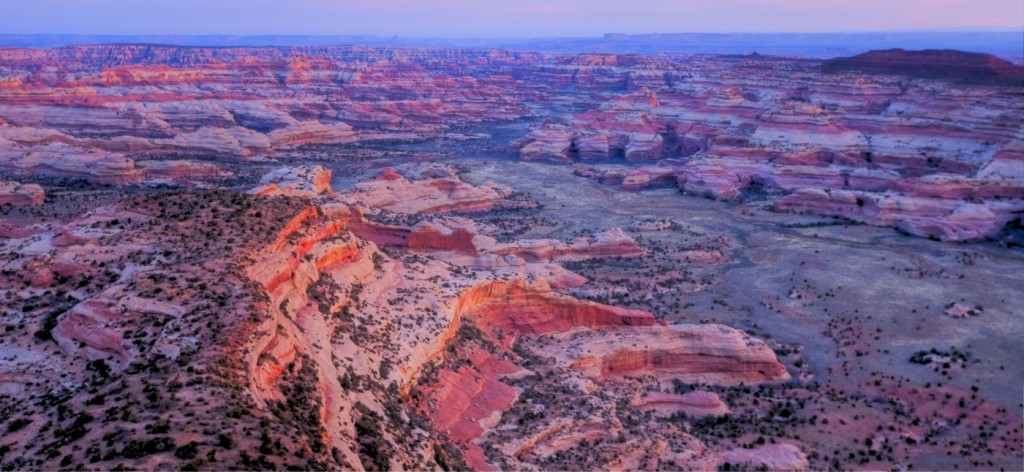With those words, Senior U.S. District Court Judge Bruce Jenkins in 2011 rebuffed claims by the State of Utah and San Juan County that Salt Creek in Canyonlands National Park was a state highway.
In a long-awaited decision in April, the Tenth Circuit Court of Appeals concurred: Salt Creek is not a state highway. That means that decisions regarding use in the corridor are the province of the National Park Service, not the state and not the county.
Salt Creek Canyon is one of the loveliest little corners of Canyonlands National Park. Aside from the Green and Colorado Rivers, it contains the only perennial stream in the park and is home to the Salt Creek National Register Archaeological District, the area with the highest recorded density of archaeological sites in the park. The threat that motorized vehicles poses to these irreplaceable resources is well documented and led directly to the National Park Service’s decision to close the canyon to such use.

A Quiet Place
Angel Arch, the largest arch in the park, also stands in Salt Creek Canyon. Just short of 10 miles up the canyon, the arch is a popular destination for backpackers. While many of the surrounding canyons are open to motorized use, Salt Creek will be protected as a quiet refuge from such activities.
In this litigation, the state and the county relied on an archaic 1866 law known as Revised Statute (RS) 2477 to argue that occasional travel in Salt Creek Canyon by jeeps had created a public highway. The Tenth Circuit rejected these claims and affirmed the district court’s findings.
The decision will have important implications beyond Salt Creek. The State of Utah and its counties are pursuing more than 20 similar cases asserting that more than 30,000 miles of dirt trails and cow paths are state highways. SUWA will rely on this decision as it works to defeat these meritless claims.
The State of Utah wasted millions of taxpayer dollars on this quixotic quest to try and prove that the very stream bottom of Salt Creek Canyon was an RS 2477 right-of-way. The state continues to spend millions of dollars each year pursuing similar legal cases.
SUWA, the Sierra Club, the Grand Canyon Trust, the National Parks Conservation Association, and The Wilderness Society were amici (friends of the court) in the case before the Tenth Circuit. SUWA and Earthjustice attorneys represented the coalition.
—Steve Bloch
(From Redrock Wilderness newsletter, summer 2014 issue)

